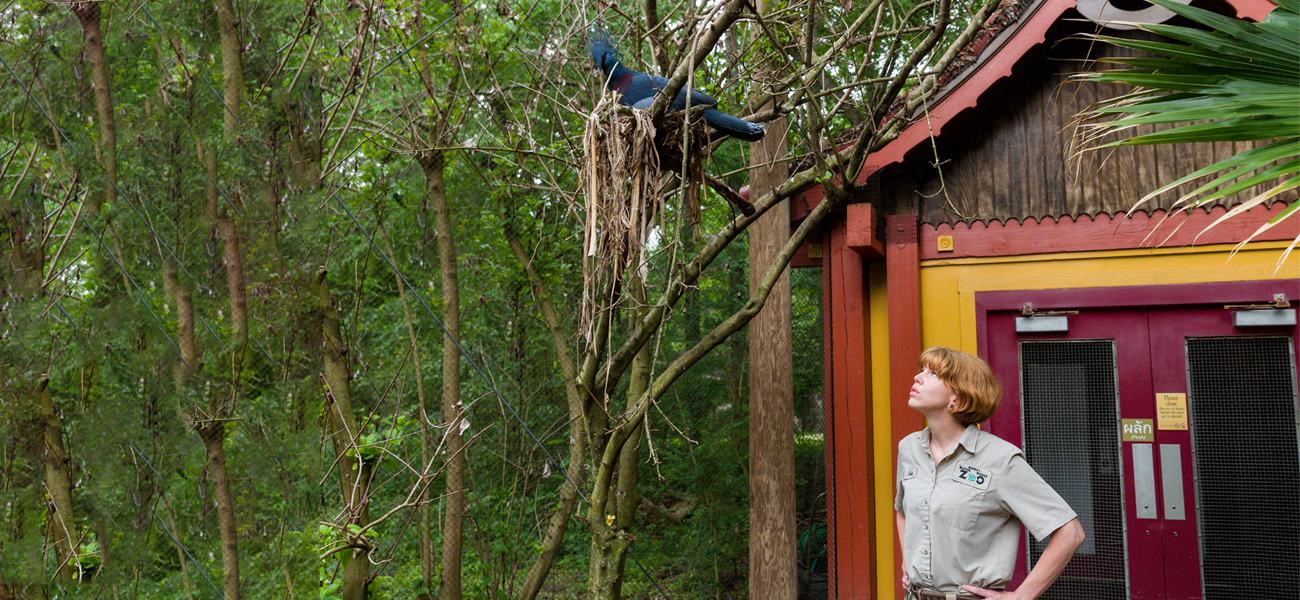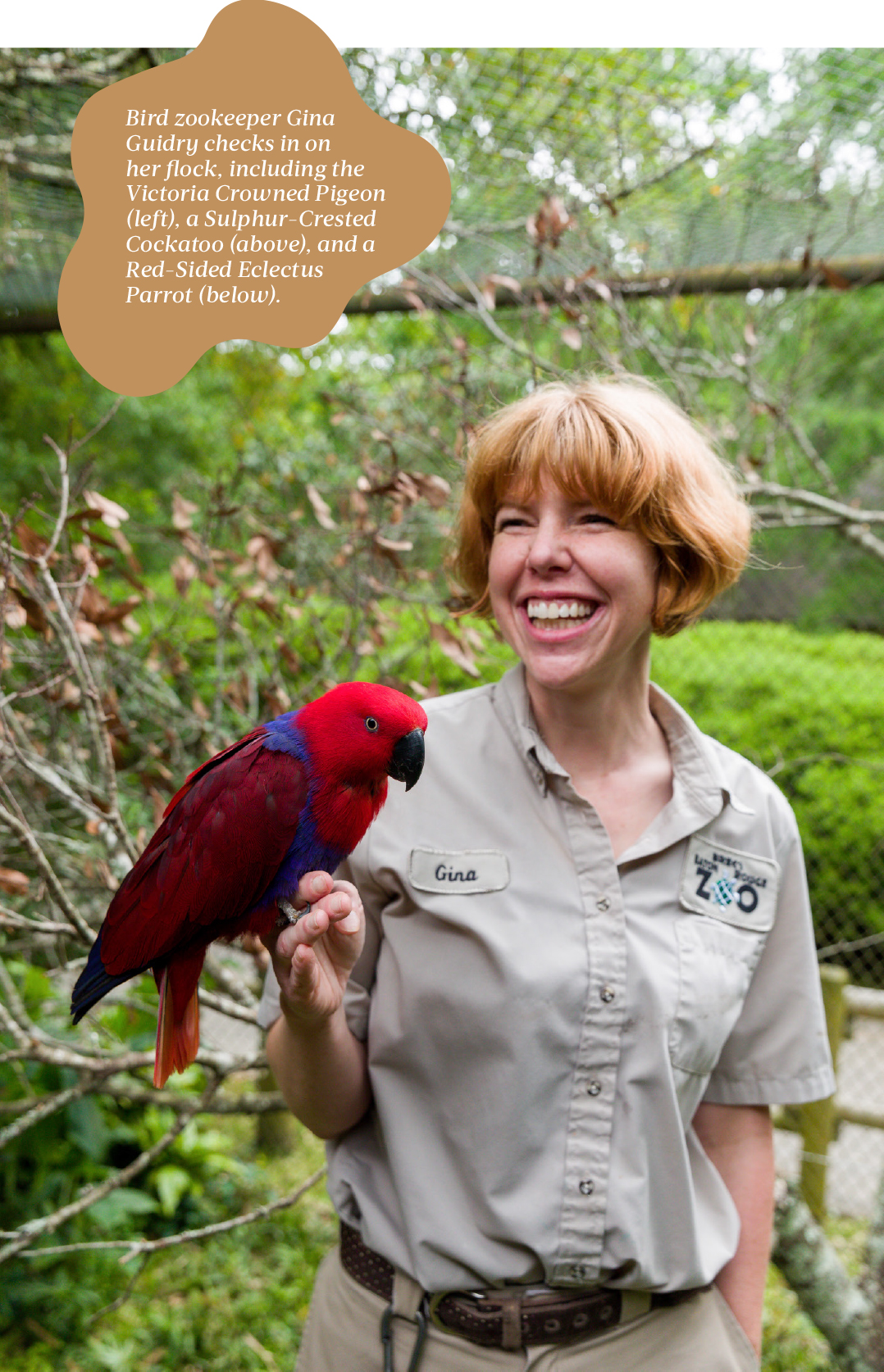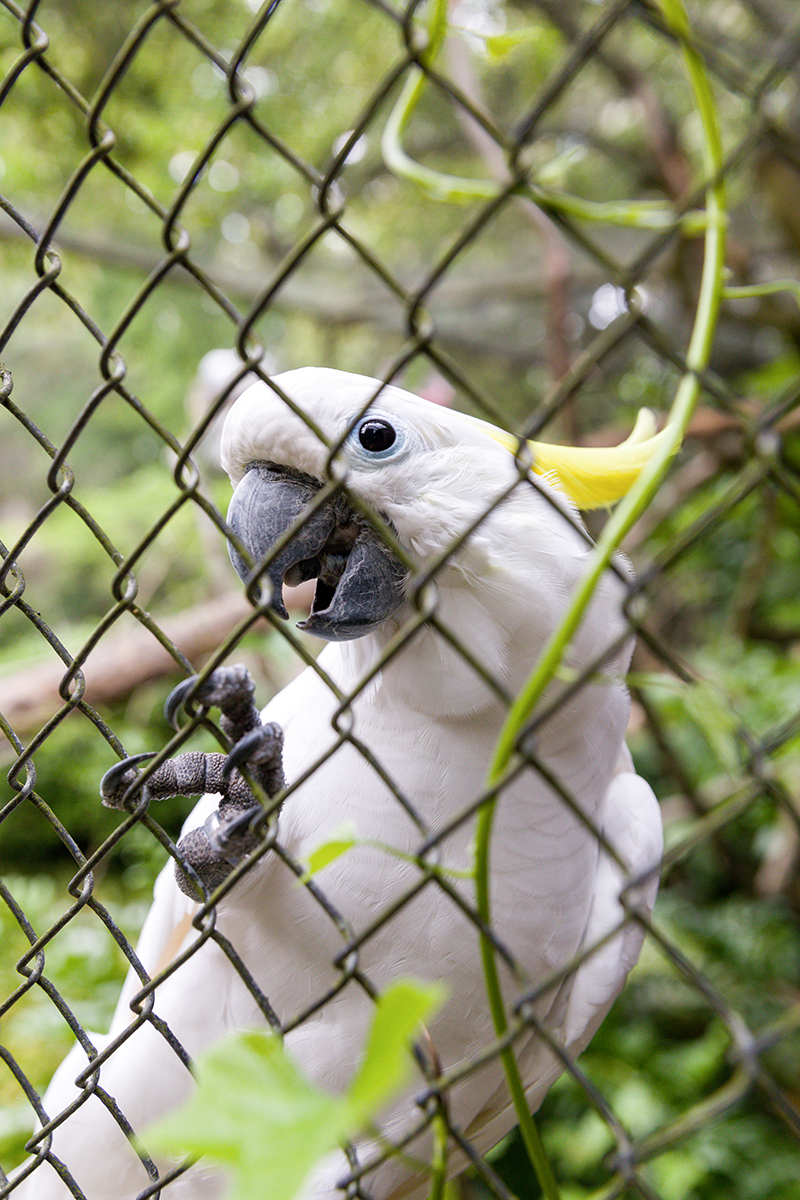We followed along for a day of feeding, cleaning habitats, checking the vitals—and more feeding and cleaning—at Baton Rouge Zoo
Think you know your dog or cat? It’s nothing compared to the insights a zookeeper develops about the wild animals in their care. Zookeepers are like observant parents, watching over their animals’ behavior, health and demeanor. They make sure animals eat well, live in safe, clean conditions, enjoy fresh stimuli and develop new skills that keep their senses alert. If an animal needs help, it’s the zookeeper who’ll spot it first.
Zookeepers at BREC’s Baton Rouge Zoo tend to more than 700 individual animals, working in four teams assigned by species. One team handles birds, and a different team cares for hoof stock animals like deer, elk and ibex. Another watches over primates and carnivores, which have similar safety considerations. A fourth team is assigned to the children’s petting zoo and aquarium.
But no matter what creatures they’re caring for, zookeepers follow a prescriptive daily plan they say prioritizes the animals’ wellness. There’s a lot to do before the zoo even opens for the day, and plenty more items to mark off the checklist before they put up their charges for the night. brzoo.org
|
|
|
![]()
 4 to 8 a.m.
4 to 8 a.m.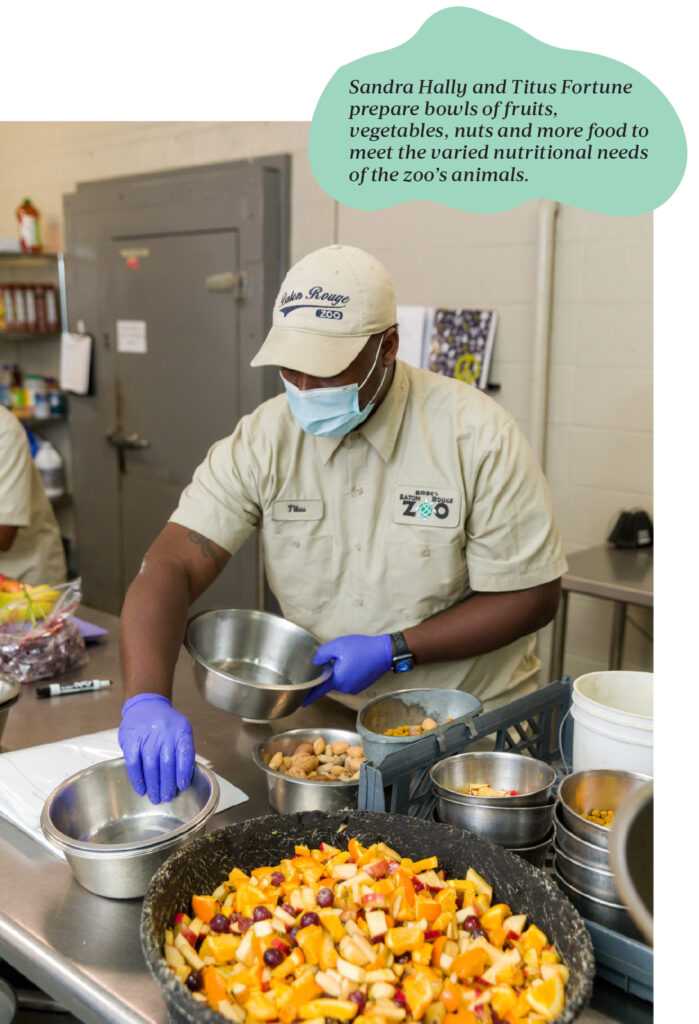
Breakfast for 700
Before zookeepers arrive, an early morning commissary crew is hard at work preparing meals—called diets—for each species. They follow pages of clipboard instructions that ensure the animals are given healthy amounts of varied, tasty foods. For example, fruit bats get salads of chopped fresh fruits and vegetables. Birds of prey dine on appropriately sized mice and rats. Carnivores get a variety of lean meats. Spider monkeys are fed something called monkey biscuits that are soaked in apple juice.
“When it comes to the animals, you have to make sure you are focused on giving them the right amount,” says 16-year zoo employee Commonisea Samuel. “It’s our job to take care of them and their health.”
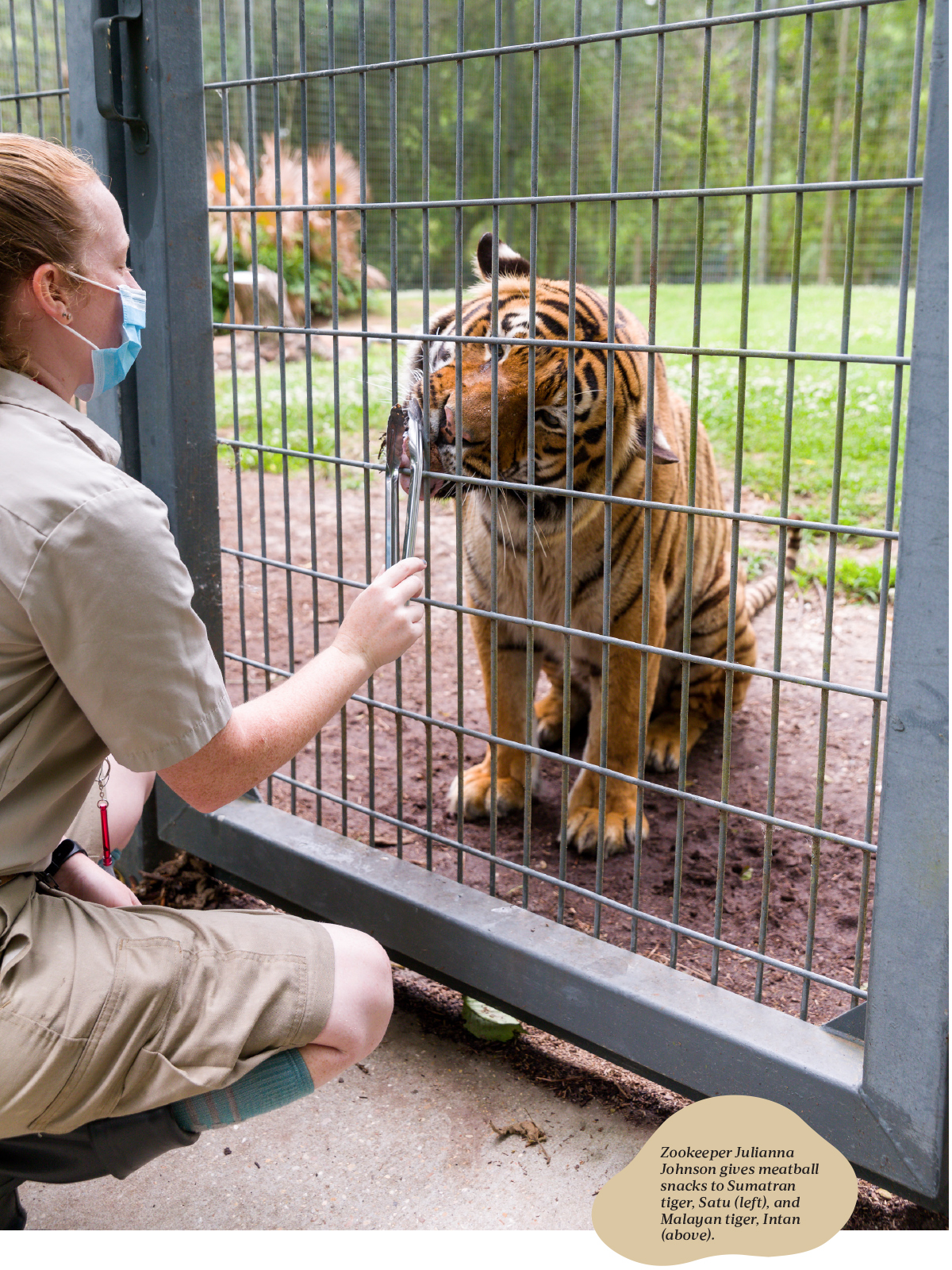 8 a.m.
8 a.m.
Feeding time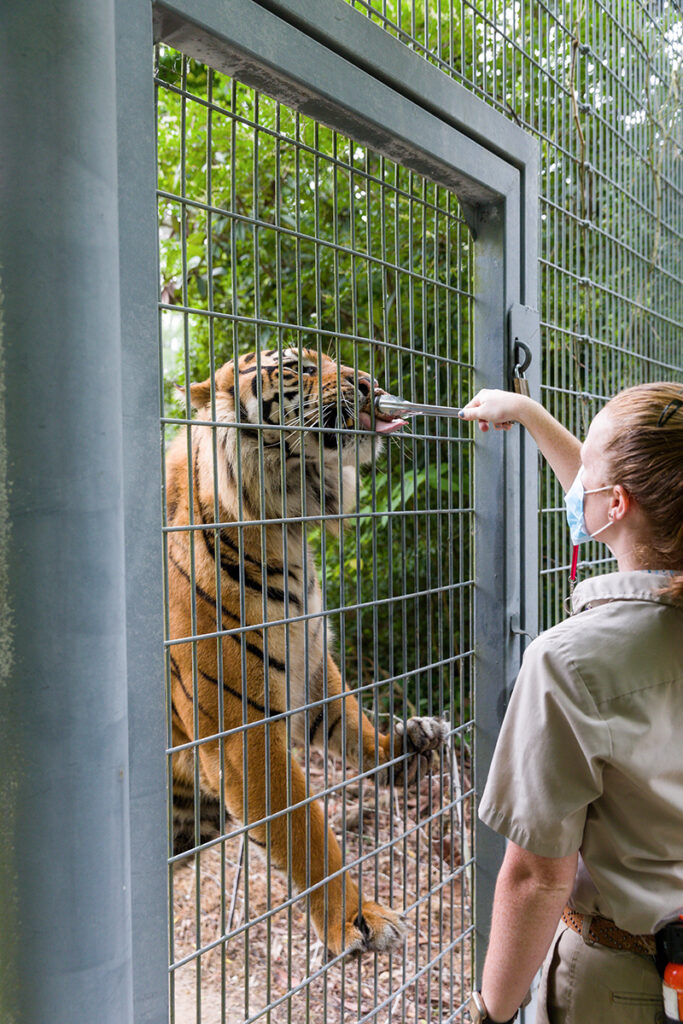
Zookeepers arrive and head to the commissary to pick up the animal diets, some loading them onto staff trikes for easy transport. If necessary, they also head to the animal hospital to pick up medicines their animals might need. Next, they make rounds at their exhibits to give out those morning diets. Keepers can enter the enclosures of certain animals, like birds, but they feed others through food chutes.
9 a.m. to noon
On the lookout
Like parents, keepers tidy up after the meal is over, including removing feeding bowls, cleaning pens and maintaining the exhibit so the animals live in healthy conditions. They’re also preparing for visitors to arrive at
9:30 a.m. All the while, they’re carefully observing the animals to make sure they’ve eaten well and are exhibiting normal behavior. This takes developing a sixth sense about them, says bird zookeeper Gina Guidry, so keepers can quickly spot something amiss.
“After I feed them, I’m checking to make sure no one has any injuries, or is sick or in distress,” Guidry says. “Then I’ll come back and do a closer check on everyone to make sure their behavior is still normal.”
1 to 3:30 p.m.
Lunch and learn
Many animals get a second feeding, sending the keepers back to the commissary for another round of diets. After feeding the animals and cleaning their pens again, keepers carry out enrichment activities meant to stimulate and engage. This ranges from giving a primate occasional fragrant treats, like kiwis, introducing a toy with a new smell on it to a tiger, or building a platform for a bird to perch and interact. Keepers also engage in training. They have direct contact with some animals, while others are trained through a protective barrier. Keeper training isn’t about teaching tricks; it’s about teaching the animals to carry out specific activities that make their care easier.
“We do training sessions almost every day,” says primate and carnivore zookeeper Julianna Johnson. “They’re trained to do things like show me their paws or the inside of their mouths, so they can actually participate in their own wellness.”
Throughout the afternoon, keepers take careful notes on what they’ve observed about their animals for their exhibit’s curator to review. After COVID-19 restrictions are lifted, they’ll conduct Keeper Chats throughout the day, sharing facts about the animals with visitors.
3:30 p.m.
How’s the weather?
Weather is a big consideration for zookeepers, since falling temperatures and rainstorms require some animals to be placed in enclosures to manage their stress and safety. When this happens, herding the animals requires different strategies. For example, the giant tortoises can be attracted by an orange bucket, which they associate with food. Moving the animals takes time, so a keeper has to be vigilant about daily weather conditions. “I have like four weather apps,” Guidry says.
|
|
|
4 to 5 p.m.
Down for the night
As closing time approaches, the keepers prepare their final steps, making sure the exhibits are clean and ready for bedtime and that the animals are safe and content for the night. “Timing is a big part of it,” Guidry says. “Especially in the evenings, you have to give yourself enough time to get everything taken care of for the animals before you leave.”
This article was originally published in the June 2021 issue of 225 magazine.




